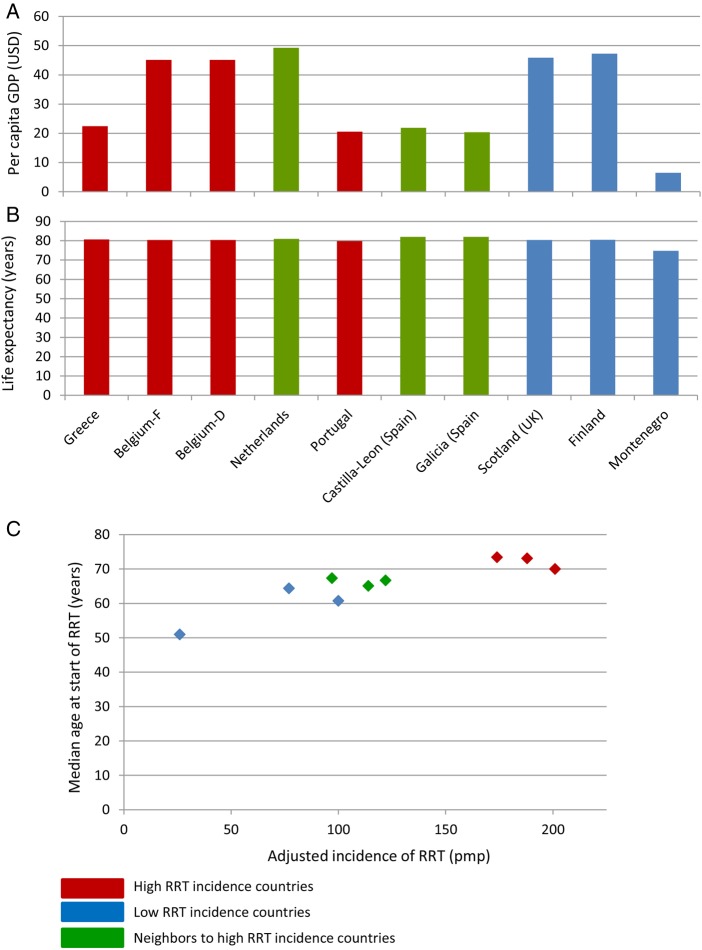Fig. 4.
Some factors potentially influencing incidence and prevalence of RRT. (A) Per capita GDP at current prices—US dollars.
Source: UNdata 2012 (https://data.un.org/Data), except for Scotland and Spanish Regions 2013 (http://www.ine.es/en/prensa/np835_en.pdf). Belgium GDP for both Belgium regions. Differences in income do not appear to explain differences in RRT incidence and prevalence in neighbouring countries or regions, although the very low income in Montenegro may relate to low RRT prescription. USD: United States dollars. (B) Life expectancy 2010–15. With the exception of low income Montenegro, the life expectancy is very similar for countries with striking differences in RRT prescription. This does not support the hypothesis that early death from other (cardiovascular?) causes explains the low RRT incidence and prevalence in high income countries.
Source: UNdata (https://data.un.org/Data). Country, not regional data presented. (C) Median age at start of RRT in the ERA-EDTA Registry 2012 Report versus incidence of RRT in the same report. In countries with lower RRT incidence, the median age at start of RRT appears to be lower, suggesting that countries with higher RRT incidence start older patients in RRT and this may contribute to differences in RRT epidemiology between countries. In (C) country-level data are presented for Belgium. Belgium-D: Belgium Dutch-speaking (Flanders), Belgium-F: Belgium French-speaking (Wallonia).

